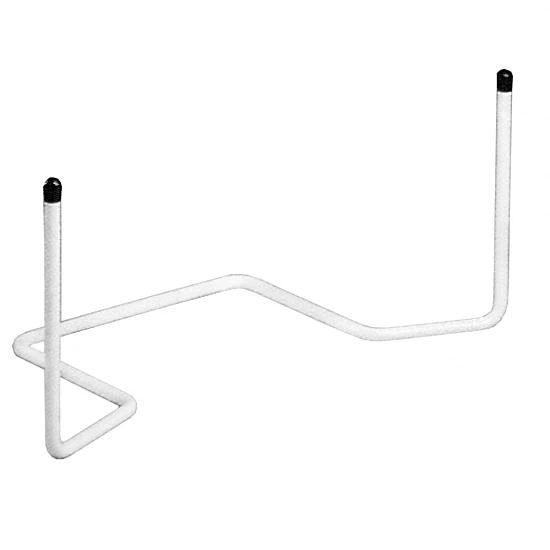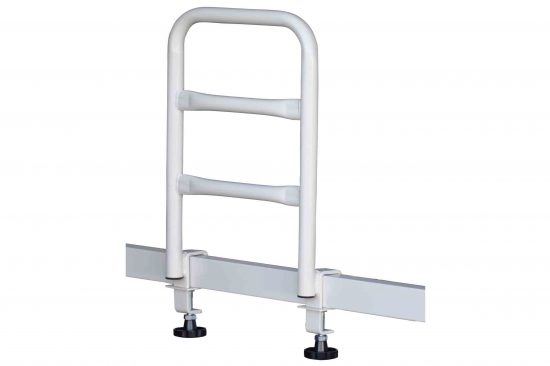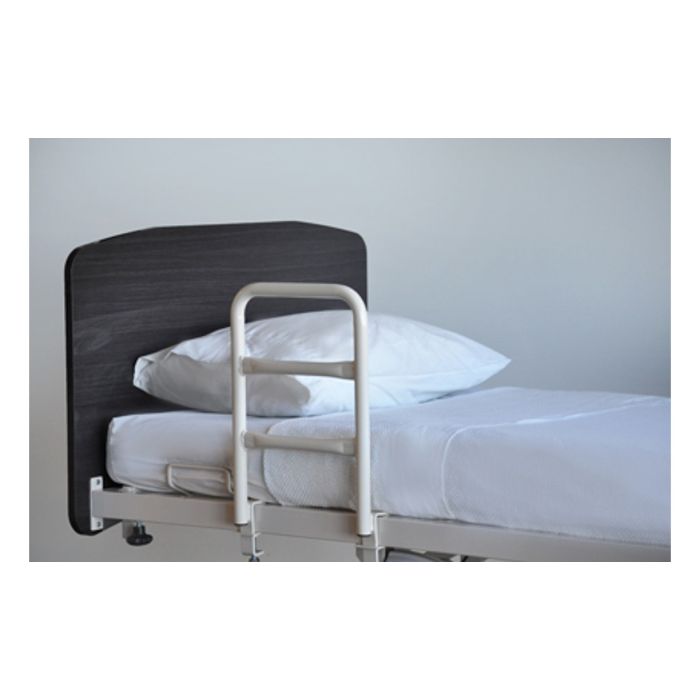Support rails enable safer bed mobility for the disabled and elderly. Its design has safety advantages over the bed poles/sticks it replaced. Suggestions for risk assessments and criteria for use.
The information below is from my experience with support rails at Carey Bay Nursing Home after the Coroner’s Inquest and removal of bed poles, from a proposed assessment by Central Coast aged-care physiotherapist Dale Bachelor (2010) and from Bed Sticks, Poles and Rails position statement by Occupational Therapy Australia (2020).
The Problem: KA524 bed poles

Bed sticks/poles pose a risk of injury or death, with documented cases of asphyxiation by entrapment, and anecdotal reports of impalement and falls. In environments where behaviour may be challenging, they may also have the potential to be used to harm others… Bed poles/sticks are generally contraindicated… in residential care facilities.
Bed Sticks, Poles and Rails Position Statement
Designing the CLP400 Clamp-on Support Frame

The CLP400 support rail (above) was designed to prevent entrapment, impalement and falls that occurred with the use of KA524 bed poles
Advantages of the CLP400 Support Rail
- It is bolted to the bed frame which prevents it moving to create a gap between it and mattress, minimising entrapment.
- It doesn’t need the resident’s weight to prevent it moving, so residents can use it when getting into bed or standing beside the bed, preventing falls.
- It is wider with rounded edges preventing impalement.
Risk Assessment and Mitigation for Support Rails
Occupational Therapy Australia recommends that occupational therapists are the most suitably qualified health professionals to recommend/prescribe bed sticks/poles (and support rails)…
Bed Sticks, Poles and Rails Position Statement
My recommended procedure for assessment and fitting of the CLP400 Support Rail
From personal experience, the OT Australia Position Statement and Dale Bachelor’s proposed assessment.
Occupational therapists should be involved in:
1. Assessing the functional needs of the resident
Occupational therapist training explicitly includes consideration of these factors.
Bed Sticks, Poles and Rails Position Statement
2. Considering alternative options:
- teaching of different transfer techniques,
- using a rehabilitation approach,
- using alternative pieces of assistive technology such as a leg lifter, bed ladder, overhead pole/aid, or adjustable bed,
- utilising carer assistance
- using crash mats/floor padding.
3. Assessing suitability of the resident’s:
Cognitive function:
- the ability to anticipate danger
- the ability to follow instructions
- fluctuation in cognition
Mobility:
- ability to move around in the bed independently
- ability to get in and out of the bed safely using the support rail
- falls history (particularly falls from bed)
- fluctuation in abilities
- involuntary movements
- Medication effecting the above
Perception
- Vision, hearing, parasthesias…
3. Assessing suitability of the:
Environment:
- Assessment the suitability of the bed and mattress to the fitting of a support rail (frame shape and mattress rails to prevent mattress moving).
- The effectiveness of the support rail as a safe tool on independence for that resident.
- The bed to have been assessed and tagged to the safe and correct height to facilitate ease of standing up / transferring from the bed.
4. Liaison with:
Staff:
- through comprehensive documentation and education
- encouraging that whenever in the room, and especially when making the bed, to ensure the pole is in the correct position and not loose
- reporting issues promptly
Resident:
- Education and training in safe use
- Family and persons to reinforce safe use, and to be aware of risks
Maintenance staff:
- Supervising installation and maintenance
Allied health staff:
- Ensuring that an appropriate monitoring system is in place with re-assessment after any fall or change in condition, and at each Mobility review.
Support Rail Criteria
A support rail is not to be used:
- by any resident with moderate to severe dementia preventing safe use.
- by any resident who has recurrent falls from bed
- by any resident whose physical or cognitive function has been compromised by medication
- by any resident who is immobile
- when there is a gap or potential gap between the vertical rail and the mattress
- before an assessment by the appropriate allied health professional has been completed
A support rail:
- must be fitted to the manufacturers instructions
- must not be fitted where there is no access to immediate assistance.
